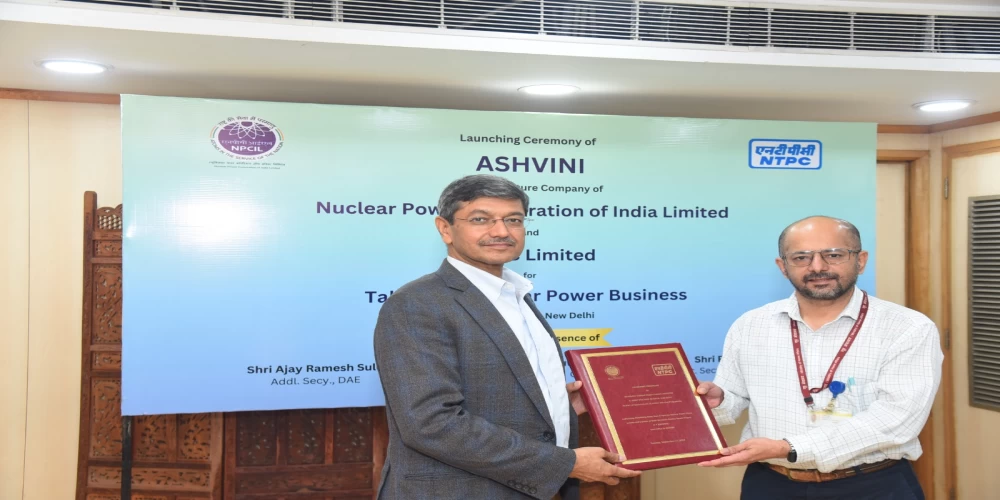
Ranchi: In a significant development for India's nuclear power sector, the government has granted approval to Anushakti Vidhyut Nigam Ltd. (ASHVINI), a joint venture between the Nuclear Power Corporation of India Limited (NPCIL) and NTPC Ltd. This new entity, with NPCIL holding a 51% stake and NTPC Ltd. holding 49%, has been established to build, own, and operate nuclear power plants across India, in compliance with the Atomic Energy Act.
The government has also greenlighted the transfer of the Mahi Banswara Rajasthan Atomic Power Project (MBRAPP), a 4x700 MW project based on indigenous PHWR technology, from NPCIL to the ASHVINI joint venture. This project will mark one of the first major undertakings of ASHVINI in India's pursuit of nuclear energy expansion.
Further boosting the prospects for nuclear energy, the government has granted exemptions allowing NPCIL to invest beyond Rs. 500 crore and NTPC to invest beyond Rs. 5,000 crore in this single joint venture. These exemptions are intended to facilitate the financing required for the swift growth of nuclear power capacity in India.
In addition to the MBRAPP project, ASHVINI is expected to pursue other nuclear power projects nationwide, pooling the resources, technology, and expertise of both NPCIL and NTPC. This joint effort is aimed at accelerating the expansion of India's nuclear power generation, which is critical for the country’s goal of achieving Net Zero emissions by 2070.
On 17 September 2024, the Department of Atomic Energy officially handed over the government’s approval to the heads of both NPCIL and NTPC, marking a significant milestone in India's journey towards sustainable energy development. /BI












